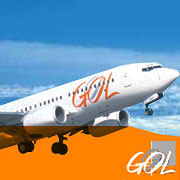In less than five years, Gol Airlines has become one of the most profitable and fastest-growing airlines in the world. The miracle worker was Constantino de Oliveira Jr. Although he was only 32 years old and had no experience in the aviation sector, Oliveira transplanted the low-cost airline model to Brazil, and he scored a knockout. By controlling costs and investing in such modern equipment as the latest generation Boeing 737-700, Gol has managed to increase its fleet from five planes, initially, to 36 planes. In the process, Gol has become, during the first half of 2005, the third-largest airline in Brazil with 26.24% of the market, behind TAM, which has 43.03% and Varig, the former leader, which has a 28.32% share. Now Gol’s president has his eyes on a more ambitious goal -- popularizing air transportation throughout Latin America. However, Gol is not the only company with that plan, and other major competitors are already appearing on the continent.

Sign up to stay informed about our latest article releases.